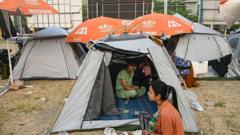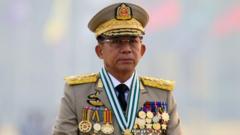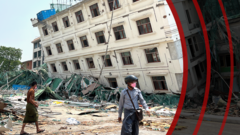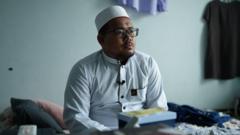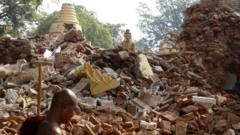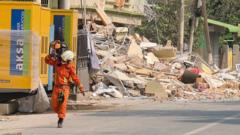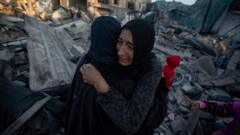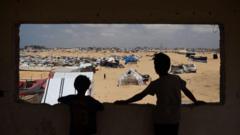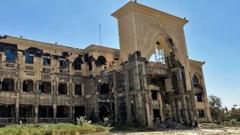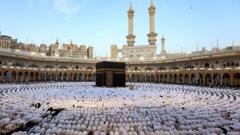Streets of Khartoum, once vibrant, now lay shattered after a brutal civil war. As soldiers commemorate Eid amidst destruction, residents grapple with loss yet express hope for reconstruction and renewed freedoms. The reality of survival weighs heavily, but flickers of resilience shine through in community efforts and cherished memories.
Khartoum's Resilience: Amidst Ruins, a Flicker of Hope Emerges
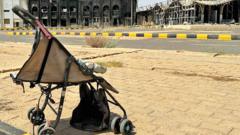
Khartoum's Resilience: Amidst Ruins, a Flicker of Hope Emerges
After the army's victory over paramilitary forces, the desolation in Khartoum reveals a complicated mix of despair, celebration, and cautious optimism for the future.
The battered heart of Khartoum tells a haunting tale of war and resilience, following the army's recapture of the capital after months of relentless fighting. This city, steeped in history and once thriving with commerce, now lies scarred—a testament to the devastating impact of a two-year civil war that has claimed over 150,000 lives and left countless more in despair.
The ruins of government buildings and burnt-out shells symbolize a critical turning point in Sudan's conflict, which erupted from a brutal power struggle between the Sudanese Armed Forces (SAF) and the paramilitary Rapid Support Forces (RSF). Though Eid celebrations erupted on the streets, the lingering undertone of uncertainty about the future remains palpable.
We found ourselves exploring the presidential palace recently regained by the army, an essential stronghold that was heavily looted and damaged. The somber remnants of its former glory are scattered among broken glass and debris. A soldier's pride contrasted sharply with the grim reality, as he marveled at the history within its walls, referring to it as a "symbol of dignity."
While jubilant soldiers celebrated Eid, their victory came at a staggering cost. The war left Khartoum’s once-bustling core resembling a graveyard, with demolished office buildings and an international airport overrun with destruction. We navigated through streets burdened with remnants of conflict, where human life now mingled with the stark reminders of violence.
A brief visit to St. Matthew's Cathedral, a pillar of faith for the Christian community, provided a glimpse of hope. Although damaged, it remained a sanctuary amidst chaos, symbolizing resilience against the backdrop of destruction. Many, including soldiers, expressed their aspirations for recovery, revealing a shared longing for peace that transcended the scars of war.
The impact of the RSF's reign of terror has led to significant societal disruption, displacing tens of thousands and instilling trauma in children. Despite the horrors of the past, optimism has begun to resurface as residents engage in small celebrations of life and community. They expressed feelings of newfound freedom, with the ability to carry mobile phones—a symbol of reconnection to the outside world and the hope for a brighter future.
Individual stories of survival and resilience stood out during our interactions. Osman al-Bashir, a neighborhood activist, emphasized the sense of rebirth felt by many. However, the haunting questions of how to navigate the aftermath of war and secure the freedoms gained over the past few years weigh heavily on their minds. The return to normalcy and the necessity of mental health support for those traumatized by conflict emerged as critical themes in our discussions.
As Khartoum stands at a crossroads, with the specter of another humanitarian crisis in regions like Darfur looming, residents remain caught between grief and hope. Despite uncertainty, the collective spirit of the city's people embodies tenacity, striving to heal and rebuild their lives amidst the ruins. Their resilience will be the cornerstone of Khartoum's future; whether it leads to recovery or further strife, only time will tell.


